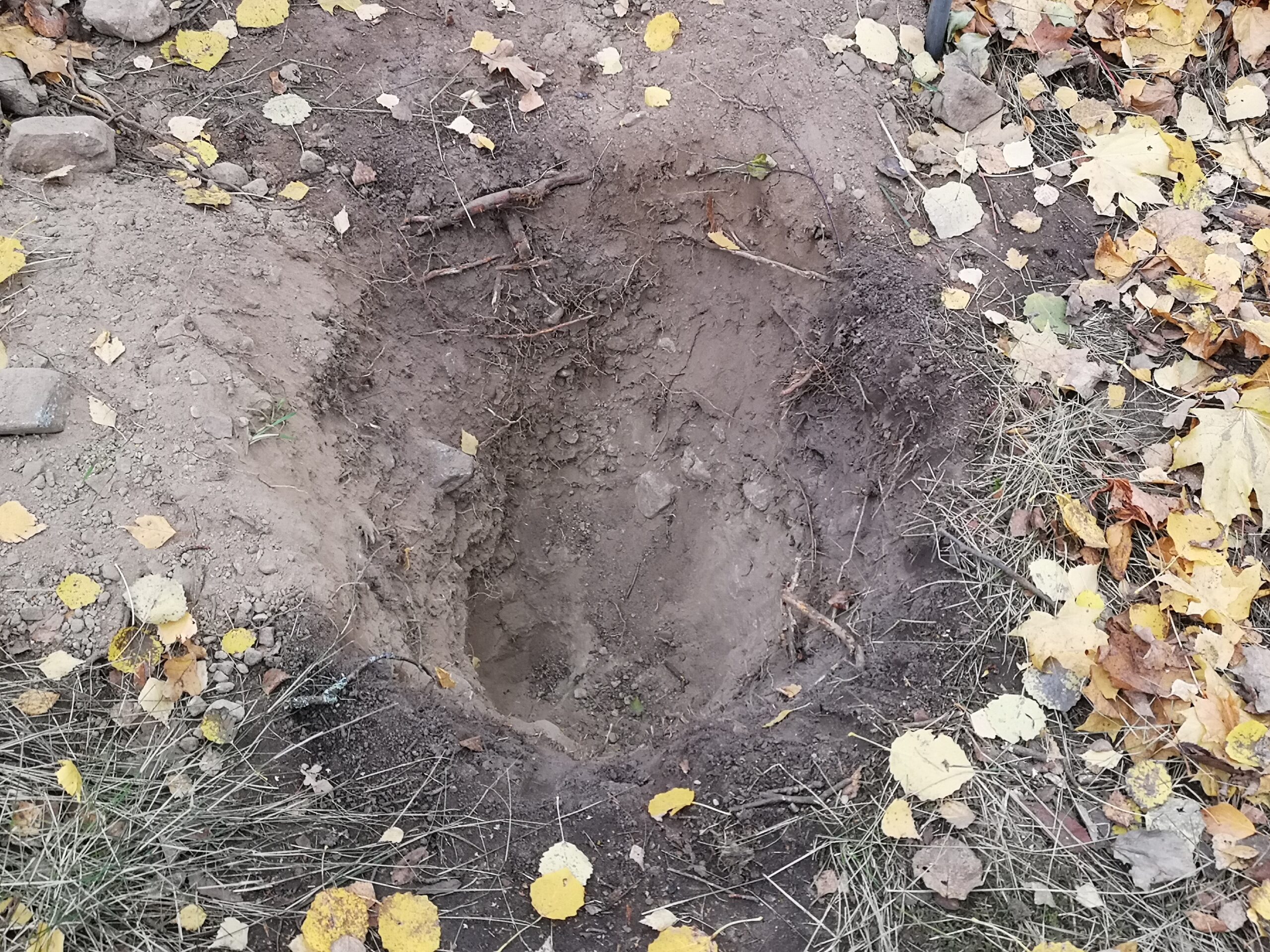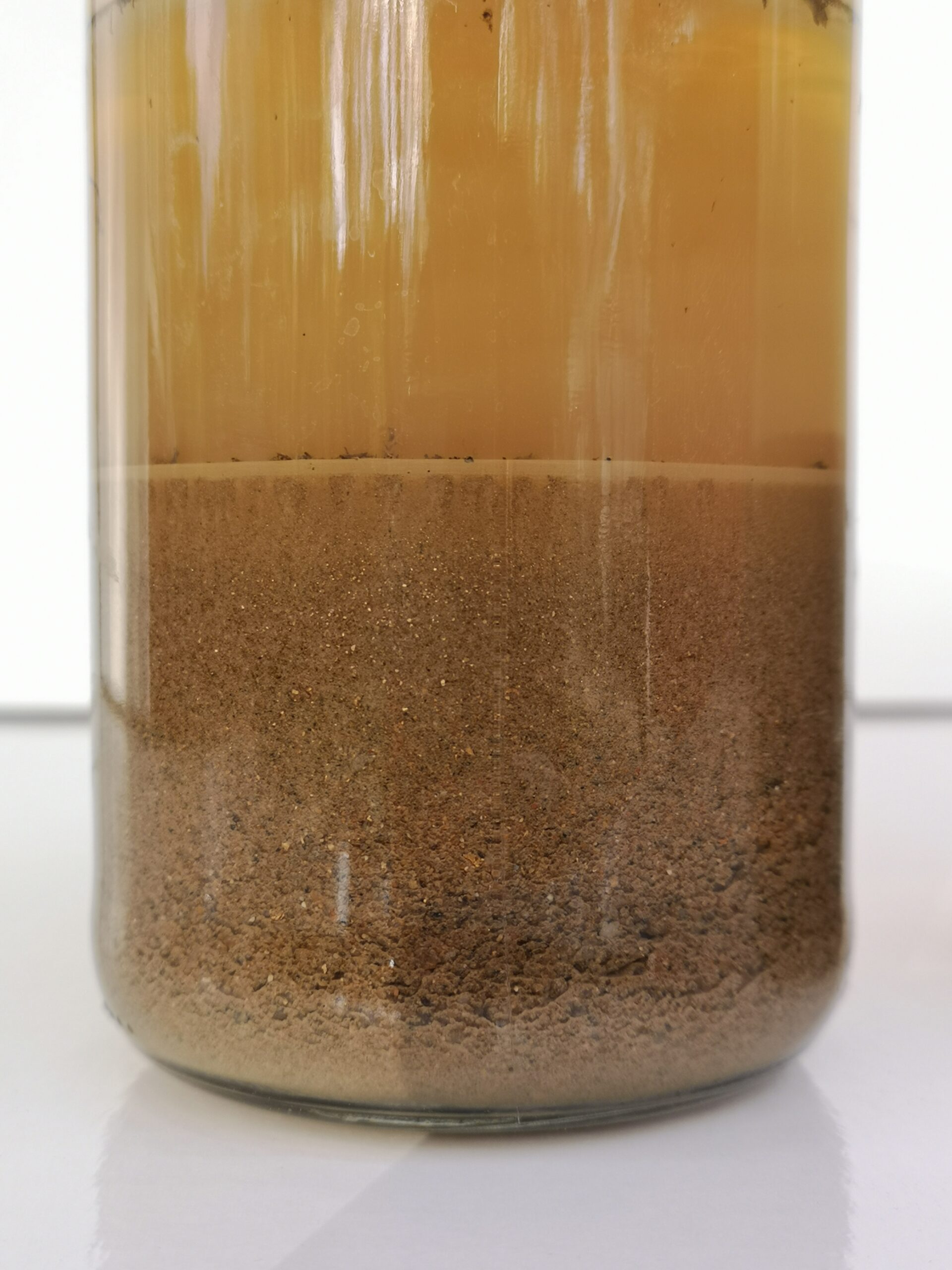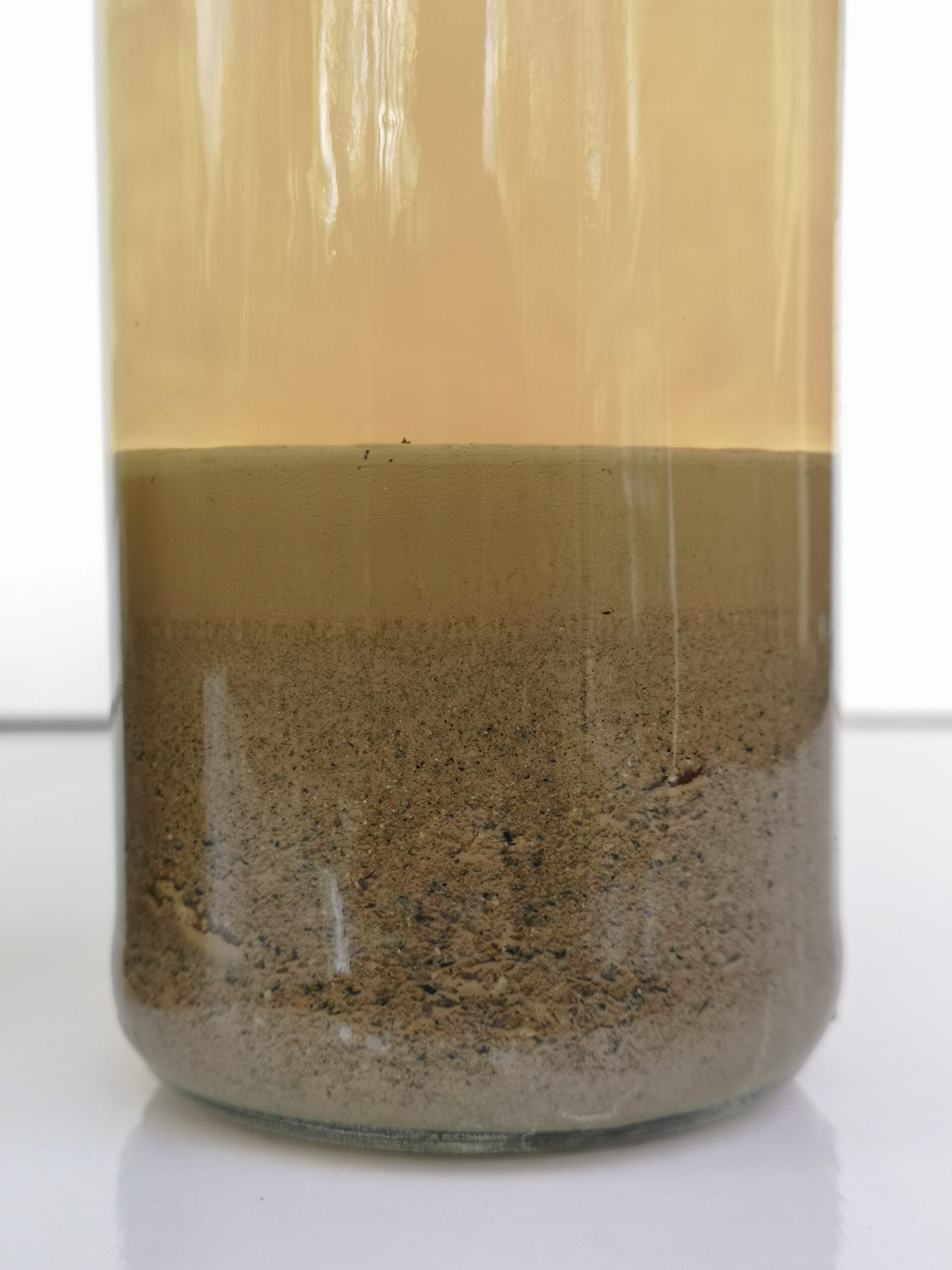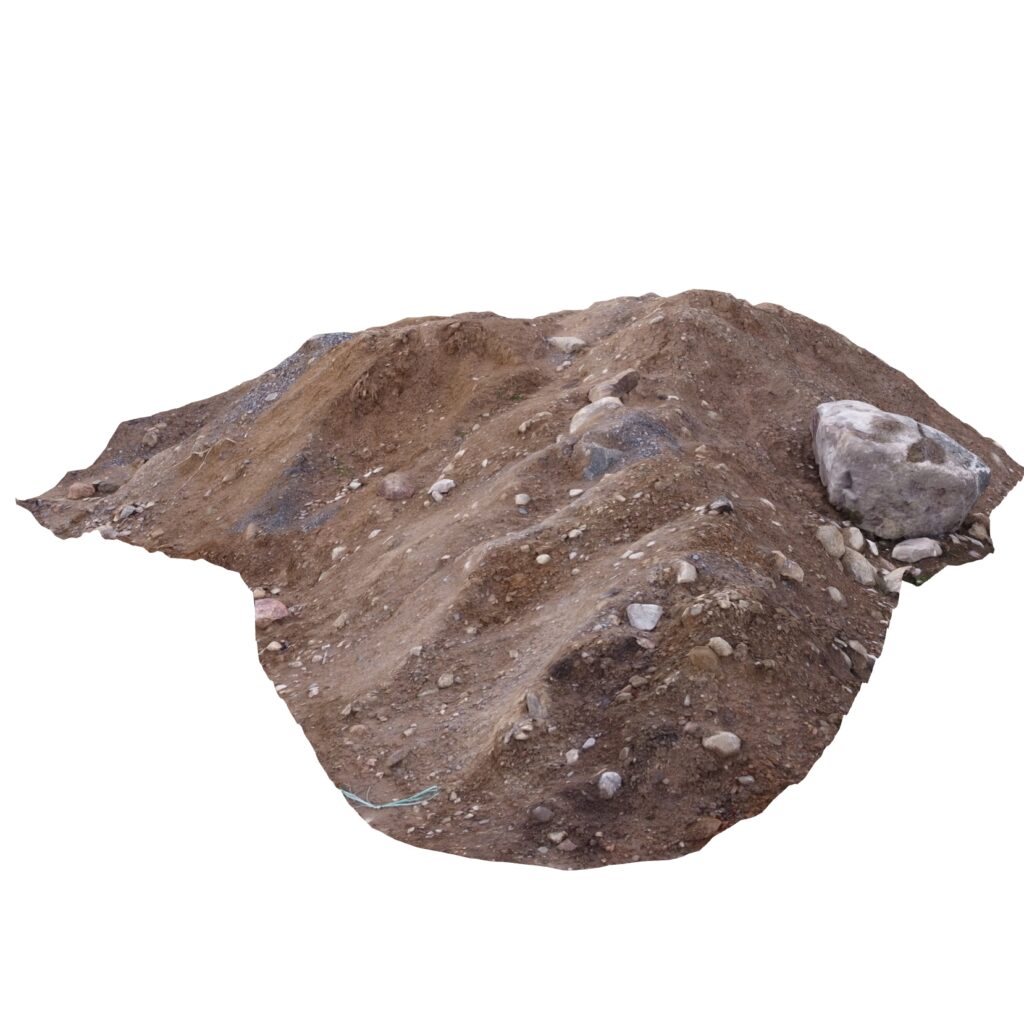Finding suitable earth
Before performing any practical tests I had to find suitable earth. I first tried using earth from my parents’ garden in Brokind, Sweden. The earth should be free from organic matter, so I had to dig about 65 cm deep. The earth that I found there unfortunately had a very low clay content as the ball drop test and the sedimentation test showed.

On a garden nearby I found a big pile of excavated earth next to a newly built house. The clay content in this earth was optimal (20 – 30 %)

To measure the components of the earth a sedimentation test can be made. The earth is placed in a jar and mixed well with water. The bigger particles will fall down first and the smaller clay particles will fall down last. If there is any organic matter it will float on the water surface. The clay content can simply be measured with a ruler after 24h.
To estimate the volume of the earth pile I 3D-scanned it with the help of a drone and photogrammetry. It was about 80 m3. Rammed earth is compacted to 50-65 % of its original volume, so this pile of earth would be enough for 40-50 m3 of rammed earth construction. A 33-42 m long, 3 m tall and 40 cm wide wall could be built from this.







